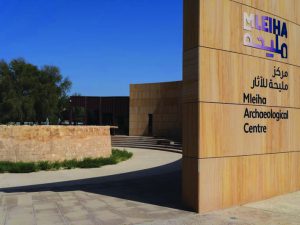SHARJAH / WAM
As the premier destination for eco-tourism within Sharjah, Mleiha National Park (MNP) stands as a notable conservation success story, giving visitors; both local and from
afar; an opportunity to experience the majesty of the desert landscape, and come closer to nature.
Established by Emiri Decree under the leadership of His Highness Dr Sheikh Sultan bin Mohammed Al Qasimi, Supreme Council Member and Ruler of Sharjah, and developed and operated by the Sharjah Investment and Development Authority (Shurooq), this 34.2-square-kilometre protected area offers an unmatched destination in one of the Arabian Peninsula’s most ecologically diverse settings. MNP is part of the Core Zone of the Faya Palaeolandscape, recently inscribed on the UNESCO World Heritage List, further confirming its global cultural value.
The park’s unique attraction lies in its diverse biomes where eco-enthusiasts can encounter distinct terrains such as the iconic Barchan sand dunes, vast alluvial gravel plains, and rugged limestone outcrops. This topographical patchwork results in specialised micro-habitats, allowing a wide array of specially adapted flora and fauna to thrive side-by-side, and it’s this ecological richness that adds to Mleiha’s global appeal.
Over 100 distinct species have been documented within the park’s boundaries, solidifying its status as a biodiversity hotspot including more than 20 indigenous plants and trees, such as the deep-rooted Ghaf tree, the thorny Umbrella Thorn Acacia, the resilient Sodom’s Apple, and the seasonal Arabian primrose; all playing important roles within the ecosystem. Serving as lifelines to the park’s inhabitants, they stabilise the shifting sands, retain moisture, and provide shelter, enabling other life to exist.
This botanical foundation supports a surprising diversity of wildlife with more than 11 mammal species navigating the terrain; most famously, the adaptable Arabian Red Fox and the graceful Sand Gazelle. Over 10 reptile species also call the park home, like the sand-burrowing Sandfish Skink and the cryptic Arabian Horned Viper; true masters of desert survival.
Avid birdwatchers also have the chance to spot 20+ species, from soaring raptors like Bonelli’s Eagle to smaller residents like the iridescent Purple Sunbird, as well as many migratory visitors. Even the smaller denizens are crucial to the park’s ecosystem with over 39 species of insects and arachnids, including the large Carpenter Bee, an essential pollinator for plants; and the Arabian Fat-Tailed Scorpion, a rarely seen predator keeping smaller insects and lizards in balance.
Mleiha translates this biodiversity into memorable experiences and adventures with guided nature trails, specialised flora identification walks, and explorations of the many biomes; directly connecting visitors to the desert ecosystem. Wildlife observation points also offer chances for quiet encounters and incredible photography opportunities. For a different perspective, horse riding traverses the dramatic dunes and plains giving people the chance to connect with these graceful animals that have served humanity for centuries. Central to the park’s ethos, these activities are designed to foster environmental awareness and appreciation as well as support the UAE’s sustainability goals.
Conservation and environmental stewardship within Mleiha National Park are paramount and a dedicated Core Conservation Zone, managed in partnership with the Environment and Protected Areas Authority (EPAA), ensures protection for sensitive habitats, even as visitors explore. Shurooq views the park’s biodiversity as invaluable “natural capital,” recognising that its preservation is fundamental to both environmental health and sustainable economic development through ecotourism.
Mleiha National Park stands as a clear demonstration that the Arabian desert is far from barren; and it serves as a diverse and protected ecosystem where specialised life flourishes, inviting all who enter to step beyond the dunes and truly come closer to nature.
 The Gulf Time Newspaper One of the finest business newspapers in the UAE brought to you by our professional writers and editors.
The Gulf Time Newspaper One of the finest business newspapers in the UAE brought to you by our professional writers and editors.
